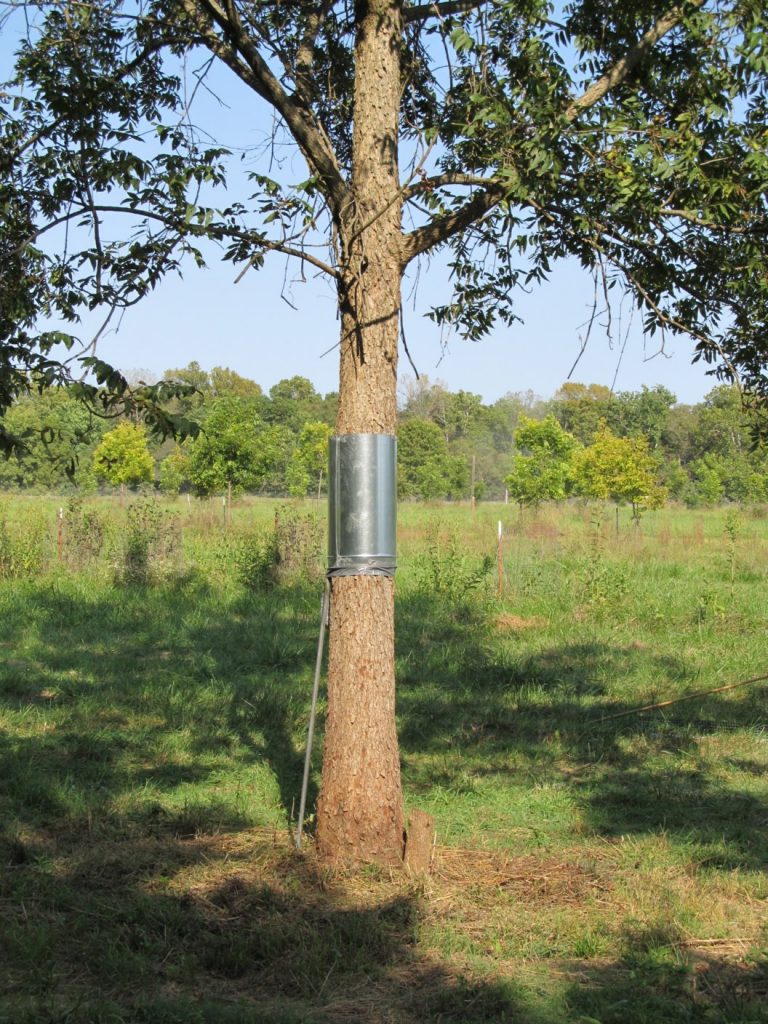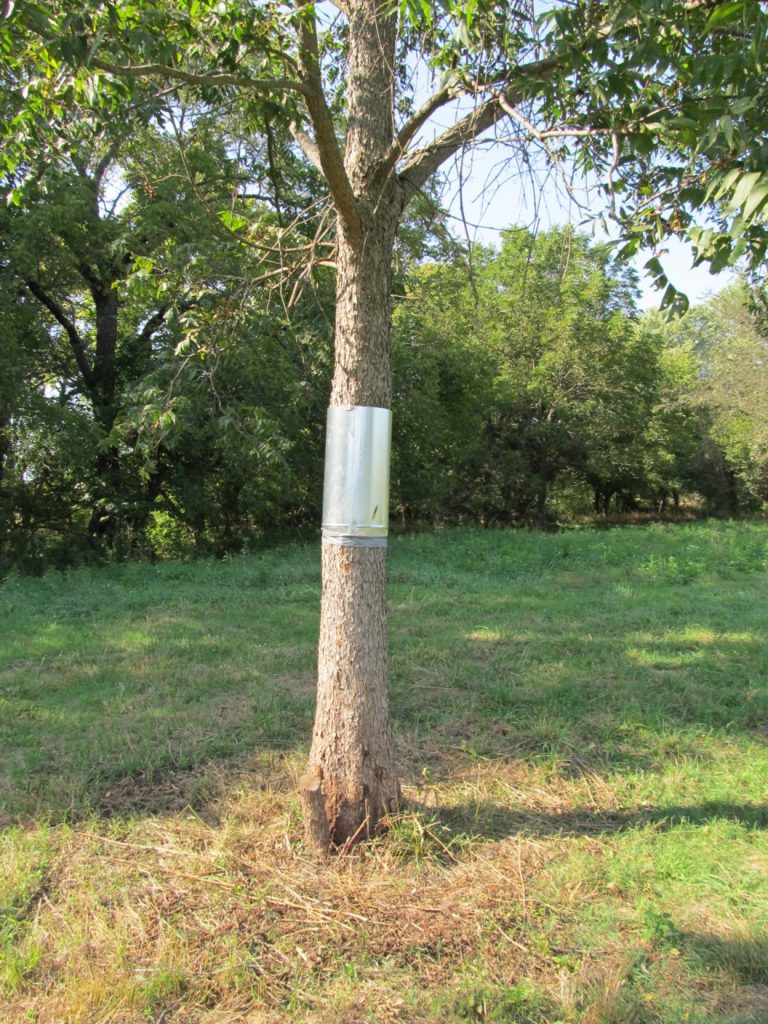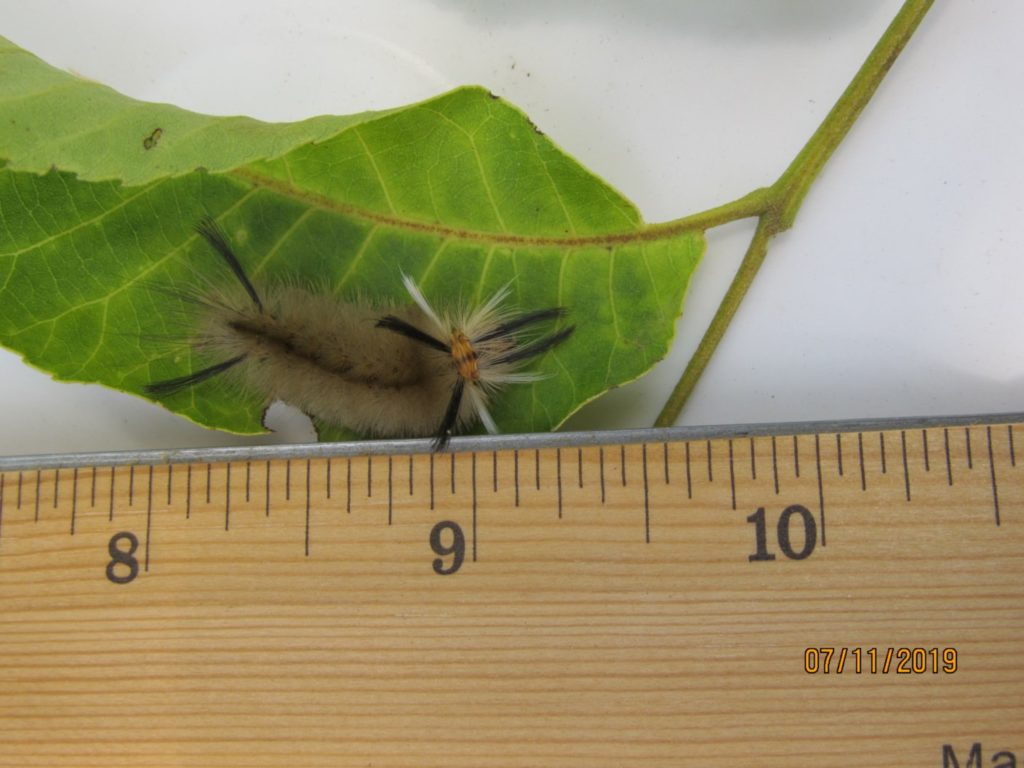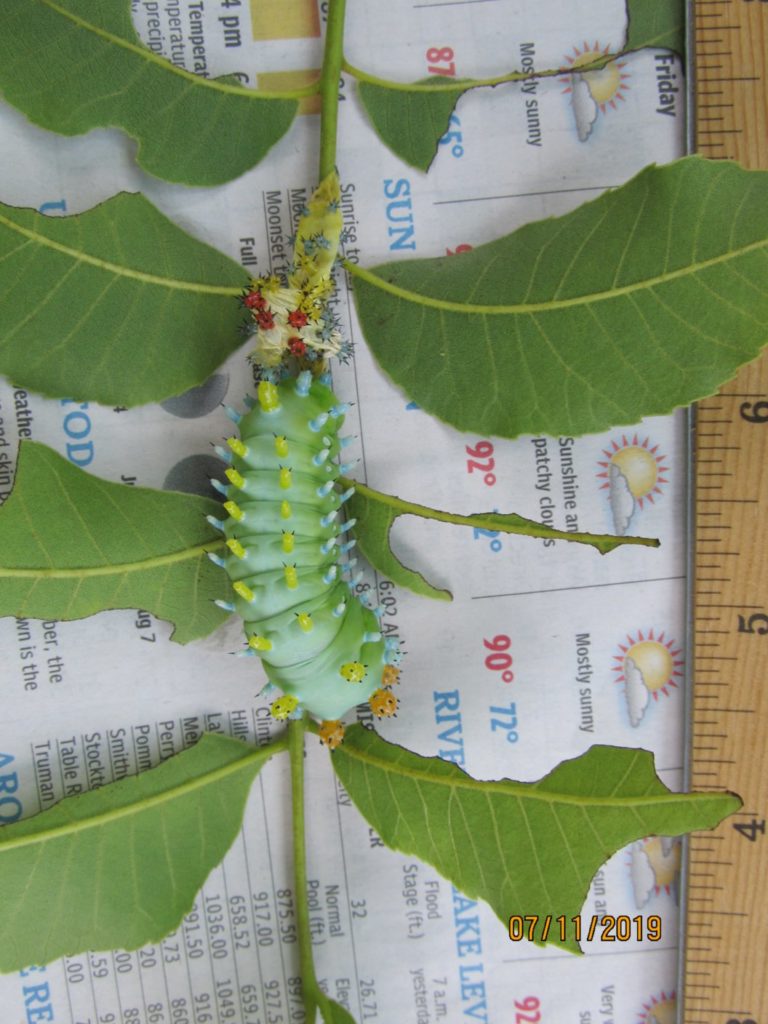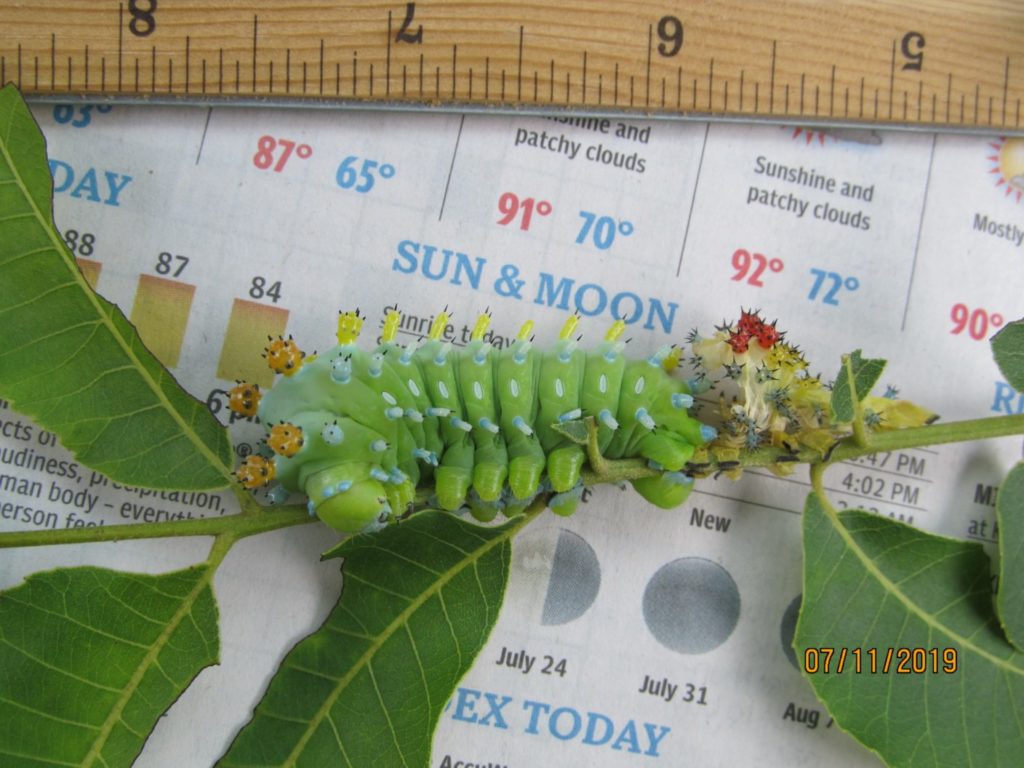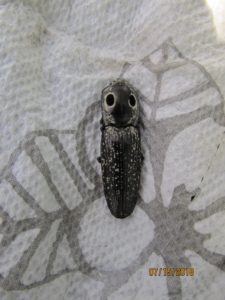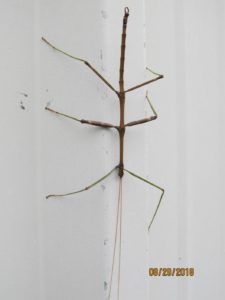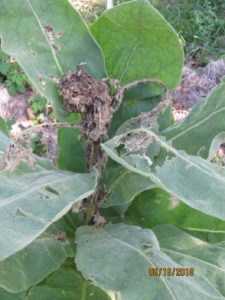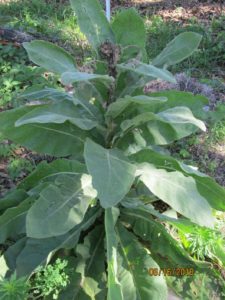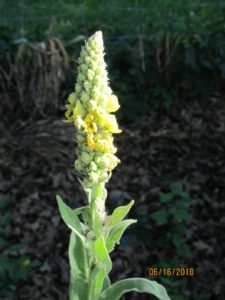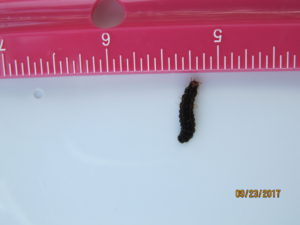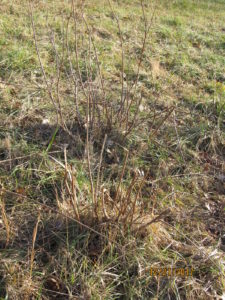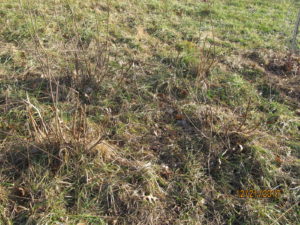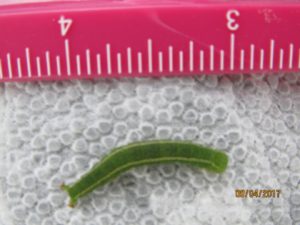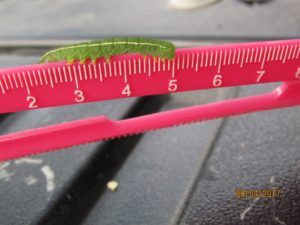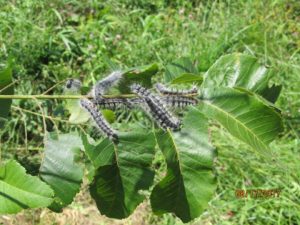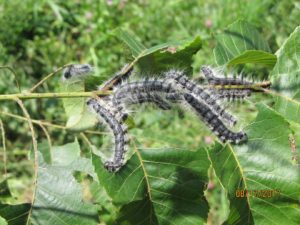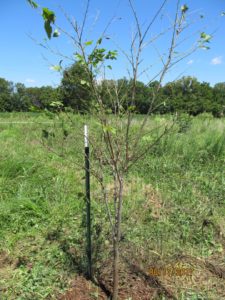The June beetles (June bugs) arrived in late April this year. During the daytime they burrow down under ground and then come out at night to eat my pecan trees. As you can see in the following two pictures they tend to attack the top shoots of the pecan trees.
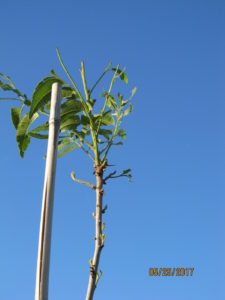
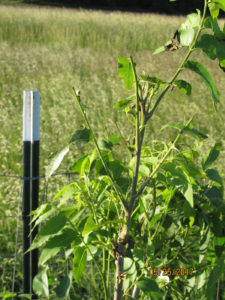
Last Fall after transplanting pecan trees from pots into the field, I sowed cereal rye around the trees. The following picture shows the rye at about five feet high and towering over the four foot high fence ring that surrounds the small tree. Those trees were not affected by the June beetles. I guess the beetles look for tall trees/plants to attack.
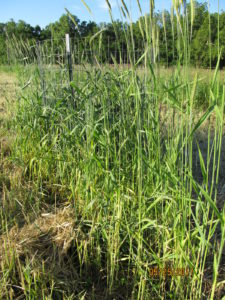
In May, 2015, the beetles did major damage to many of the young pecan trees that I had planted the previous Fall – they completely defoliated some of the small trees. Those trees did survive and grew back leaves but their growth has been slow. Trying to prune the affected trees to a central leader in 2015 was practically impossible. But, in 2016, there was very minor damage by the June bugs. This year they are back and attacking pecan trees. This on year/off year cycle fits the pattern noted by some writers. One interesting item to note is that in May, 2016, that same field had thousands of fire flies at night and there were some dead beetle shells seen in the daytime. The weather has been cooler this year and when the temperature is 50 degrees or below the fire files do not fly around at night.
One method I am considering to combat the beetles involves useing ducks and lights. By placing a light out in the field at night with a pool of water under it and some ducks near by, the beetles might come to the light and fall down into the water to make soup for the ducks. But, it would be necessary to prevent the owls and critters from crashing the party. Although chickens go to bed a sundown, ducks can party all night long.
